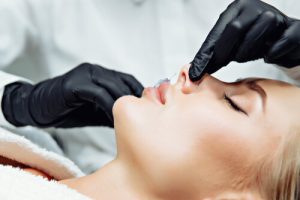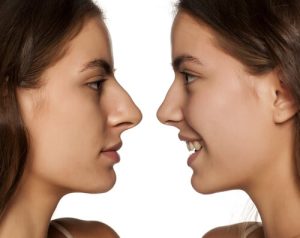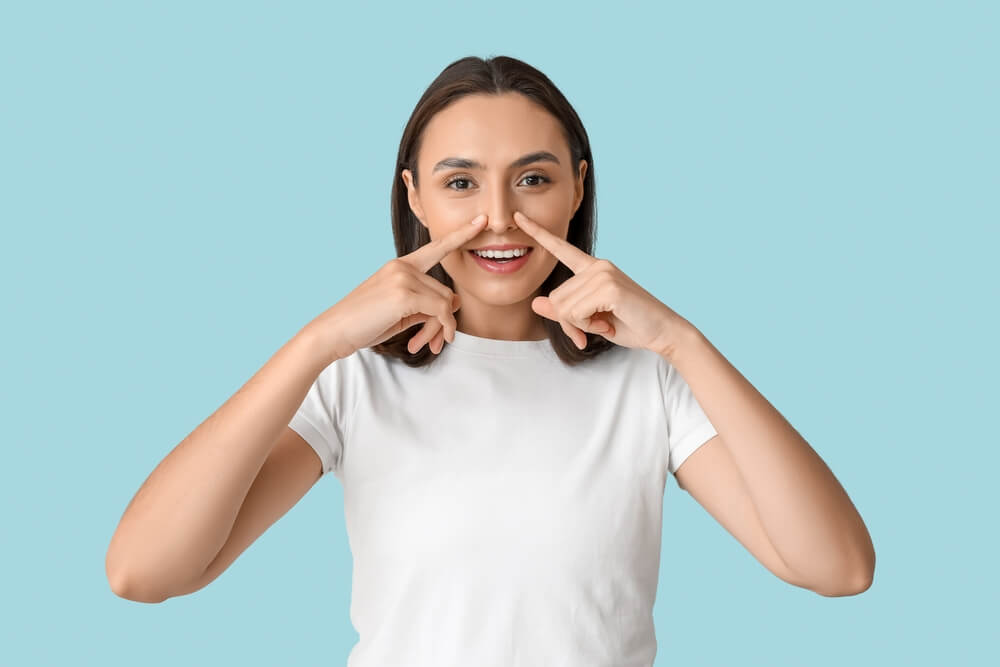Are you curious about the unique features that make a dorsal hump nose attractive? Look no further! In this article, we delve into the intriguing allure of this particular nasal structure, examining its aesthetic appeal. Embark on a journey to understand better what makes the dorsal hump nose stand out and captivate many individuals with its natural charm. Join us as we explore the fascinating world of nose attractiveness.
Understanding the Dorsal Hump: A Feature of Unique Beauty
The dorsal hump, a distinct physical characteristic located on the bridge of the nose, represents a unique aspect of facial beauty. Beyond the realms of conventional attractiveness, the dorsal hump on the nose is a feature that holds its aesthetic value and significance.
Exploring the Beauty of the Dorsal Hump:
- Defining the Dorsal Hump: The dorsal hump is a protrusion on the nasal bridge, often comprised of both bone and cartilage. It varies significantly in size and shape among individuals, contributing to the uniqueness of facial features.
- Cultural and Historical Perspectives: Across different cultures and historical periods, the perception of the dorsal hump as a beauty feature has varied. In some cultures, it’s seen as a mark of distinction and character.
- Impact on Facial Symmetry and Harmony: The dorsal hump can impact the overall balance and harmony of facial features. In some cases, it adds to the character of the face, enhancing other features like the eyes and cheekbones.
- Perception in Modern Beauty Standards: Modern beauty standards, heavily influenced by media and fashion, often lean towards a straight or ski-slope-shaped nose. However, there’s a growing appreciation for natural and unique nose shapes, including those with a dorsal hump.
- The Role of Plastic Surgery: While some opt for plastic surgery to modify the dorsal hump, there’s an increasing movement towards embracing natural beauty, including the acceptance and appreciation of unique nose shapes.
- Psychological Impact and Self-Perception: How individuals perceive their dorsal hump can significantly affect their self-esteem and confidence. Embracing this feature can foster a positive self-image and a broader definition of beauty.
Historical Perspectives on Dorsal Hump Noses and Attractiveness
The dorsal hump nose, a distinct feature in facial aesthetics, has been perceived differently across various cultures and historical periods. Its role in defining attractiveness has evolved, reflecting the diverse standards of beauty that have existed throughout history.
Exploring Historical Views on Dorsal Hump Noses:
- Ancient Civilisations: In some ancient cultures, a prominent nose with a dorsal hump was often associated with wisdom, nobility, and strength. It was seen as a mark of character and distinctiveness.
- Renaissance Era: The Renaissance period, known for its specific beauty ideals, often depicted individuals with straighter noses. However, portraits from this era still show a range of nose shapes, indicating a broader acceptance of different features.
- 19th Century Perspectives: In the 19th century, societal norms began to favour more delicate facial features, including less prominent noses. This shift reflected changing beauty standards influenced by societal and cultural dynamics.
- Early 20th Century: The early 20th century saw a further narrowing of beauty standards, often influenced by the burgeoning film and fashion industries. The dorsal hump nose was less frequently idealised in popular media.
- Cultural Variations: Throughout history, different cultures have maintained their standards of beauty, with some communities valuing the uniqueness and personality that a dorsal hump nose can bring to one’s appearance.
- Changing Perceptions in Modern Times: There is a growing movement towards embracing natural beauty and diversity in physical features. The dorsal hump nose is increasingly being appreciated for its unique contribution to individuality and character.
Cultural Significance of the Dorsal Hump in Different Societies
The dorsal hump nose, a prominent feature in many individuals, holds varying degrees of cultural significance across the globe. These societal perceptions have shaped attitudes towards this distinct facial feature, influencing notions of beauty and identity.
Diverse Cultural Interpretations of the Dorsal Hump:
- Symbol of Distinction: In some cultures, a pronounced dorsal hump is seen as a symbol of distinction and character. It is often associated with strength, wisdom, and leadership qualities.
- Middle Eastern and Mediterranean Societies: In these regions, the dorsal hump nose is quite prevalent and traditionally viewed as a mark of beauty. It’s often celebrated in literature and art, reflecting a deep-rooted cultural appreciation.
- Western Societies’ Evolving Views: Historically, Western beauty ideals often leaned towards a straighter nose profile. However, contemporary society is increasingly embracing diverse nose shapes, including those with a dorsal hump, as part of a broader acceptance of natural beauty.
- Influence of Celebrity Culture: The presence of prominent public figures and celebrities proudly showcasing their dorsal hump noses has positively influenced societal perceptions, challenging conventional beauty standards.
- Impact on Personal Identity: In many societies, the dorsal hump is more than just a physical trait; it’s an integral part of one’s identity, often linked to heritage and familial lineage.
- Modern Cosmetic Trends: While some opt for cosmetic alterations, there’s a growing trend towards natural aesthetics, with more individuals choosing to embrace their dorsal hump as a unique aspect of their appearance.
Breaking the Stereotypes: Why Dorsal Hump Noses Are Gaining Popularity

Factors Contributing to the Rising Popularity of Dorsal Hump Noses:
- Shift in Beauty Ideals: The modern beauty narrative increasingly embraces diversity, moving away from cookie-cutter standards. Dorsal hump noses, with their unique profile, are being celebrated as a part of this inclusivity.
- Celebrity Influence: High-profile celebrities and public figures sporting dorsal hump noses with confidence have played a significant role in altering public perception and fostering acceptance of this feature.
- Social Media and Representation: Platforms like Instagram and TikTok have allowed for a wider representation of diverse beauty, including dorsal hump noses, encouraging individuals to appreciate their natural features.
- Body Positivity Movement: The growing body positivity movement, which promotes the acceptance of all physical traits, has contributed to the acceptance and popularity of dorsal hump noses.
- Rejecting Cosmetic Surgery Norms: There’s an increasing trend towards natural beauty and away from surgical modifications. Many are choosing to embrace their natural nose shape, including dorsal humps, over opting for rhinoplasty.
- Cultural Pride: For many, a dorsal hump nose is a connection to their heritage and cultural identity. Embracing it is a way to honour and take pride in their background.
- Personal Empowerment: Choosing to love and accept one’s dorsal hump nose is also an act of personal empowerment and self-acceptance, resonating with contemporary values of self-love.
The Role of Fashion and Media in Redefining Beauty Standards
The fashion and media industries are pivotal in shaping and redefining beauty standards. Their influence extends to how diverse physical features, including dorsal hump noses, are perceived and celebrated in society.
Influence of Fashion and Media on Beauty Perceptions:
- Promoting Diversity: Fashion and media have increasingly begun to showcase a diverse range of models and public figures, including those with dorsal hump noses. This inclusivity helps normalise a variety of facial features.
- Celebrity Endorsement: Celebrities with dorsal hump noses featured in media and fashion campaigns contribute significantly to changing beauty ideals, demonstrating that beauty is not one-dimensional.
- Social Media Platforms: Platforms like Instagram and YouTube have democratised beauty standards, allowing individuals with different features to share their looks and gain popularity, thus broadening the definition of attractiveness.
- Magazine and Advertising Shifts: Fashion magazines and advertising campaigns are moving away from exclusively featuring traditional beauty norms and are including more unique and natural looks.
- Runway Trends: The fashion runway, once a place of homogenous beauty standards, now often features models with a range of appearances, including those with prominent dorsal humps, influencing perceptions of fashion and beauty.
- Impact of Visual Content: The constant stream of visual content across various media channels significantly alters public perceptions of what is considered beautiful or desirable.
- Narratives in Film and Television: Characters portrayed with unique features like dorsal hump noses in films and TV shows help in normalising such traits and presenting them as part of the character’s appeal.
Celebrity Influence: Public Figures with Dorsal Hump Noses
Celebrities and public figures wield significant influence in shaping public perceptions of beauty. Those with dorsal hump noses, in particular, play a crucial role in challenging conventional beauty standards and promoting a broader acceptance of diverse facial features.
Impact of Celebrities with Dorsal Hump Noses on Beauty Ideals:
- Role Models: Celebrities with dorsal hump noses serve as role models, showing that beauty is not confined to traditional norms. Their presence in the limelight helps normalise different nose shapes.
- Breaking Stereotypes: By embracing their natural features, these public figures break down stereotypes associated with conventional attractiveness, showcasing beauty in uniqueness.
- Media Visibility: The frequent appearance of these celebrities in films, TV shows, and magazines increases visibility for dorsal hump noses, slowly altering the public’s perception of what is considered attractive.
- Social Media Influence: Many celebrities use platforms like Instagram and Twitter to share their unfiltered images, including their natural nose shapes, which can empower their followers.
- Advocacy for Natural Beauty: Some celebrities openly discuss their decision against cosmetic surgery, advocating for natural beauty and self-acceptance, which resonates with many individuals facing similar choices.
- Fashion Industry Impact: Celebrities with dorsal hump noses featuring in fashion campaigns and runway shows bring diversity to the forefront of fashion, influencing trends and beauty standards.
- Empowering Personal Stories: Personal stories shared by these celebrities about embracing their features can be inspiring for individuals struggling with self-image issues.
Redefining Beauty Standards in Nasal Contours
In the realm of facial aesthetics, the shape and contour of the nose play a significant role in perceived attractiveness. While straight or downturned noses are often heralded as the ideal or most attractive nose shape, recent trends and research point towards a shift in this perception.
Redefining Beauty Standards in Nasal Contours:
- Beyond Traditional Preferences: Historically, the straight nose or the ski slope shape has been favoured in facial plastic surgery, often seen as the perfect nose shape. However, this is about not just perceived attractiveness but also societal norms.
- Positive and Negative Associations: There’s a tendency to associate certain nasal shapes with more positively or negatively perceived characteristics. For instance, an upturned nose is frequently perceived positively, while a more prominent nasal bone or a downturned nose might attract more negatively associated characteristics.
- Facial Harmony and Balance: Facial plastic surgeons and experts in physical and rehabilitation medicine now emphasise the importance of the nose’s harmony with other facial features over a universally ideal nose shape.
- Influence of Cultural and Personal Factors: Personal or family history, cultural background, and gender expression perception significantly influence one’s preference for a certain nose shape. These factors can affect social perceptions drawn from facial features.
- Statistical Significance in Preferences: Facial perception research often tries to detect statistically significant differences in preferences for nasal shapes. Yet, these findings don’t necessarily dictate individual choices or reflect broader societal trends.
- Emergence of Diverse Preferences: Recently, there’s been a growing appreciation for diverse nasal shapes, including the dorsal hump, as facial plastic surgeons and the public alike recognise the beauty in uniqueness.
- Impact of Gender and Identity: The perception of nasal prominence, such as a male nasal dorsal contour, can be closely tied to gender expression perception and its socially desired positive characteristics.
Cosmetic Choices: To Embrace or Modify the Dorsal Hump

Navigating the Decision on Dorsal Hump Modification:
- Personal Preference and Aesthetics: The choice to modify a dorsal hump through rhinoplasty or to embrace it largely depends on personal aesthetic preferences and how individuals feel about their natural appearance.
- Cultural and Societal Influences: Cultural background and prevailing societal beauty standards can influence decisions. While some cultures view the dorsal hump as a unique feature, others may lean towards a more conventionally accepted nose profile.
- The Role of Media and Celebrities: Media representations and celebrity choices impact public perceptions. The visibility of public figures embracing their dorsal hump can empower others to appreciate their natural features.
- Medical Considerations: In some cases, the decision to undergo surgery may be influenced by medical factors, such as breathing difficulties associated with the shape of the nose.
- Psychological Impact: For some, modifying a dorsal hump is a path to enhanced self-confidence and body image, while for others, embracing their natural nose shape is a statement of self-acceptance and body positivity.
- Consultation with Professionals: Consulting with facial plastic surgeons can provide insight into the potential outcomes of surgery, helping individuals make informed decisions based on realistic expectations.
- Evolving Beauty Ideals: The growing trend towards diverse and inclusive beauty standards encourages a broader acceptance of different nose shapes, including those with a dorsal hump.
Promoting Body Positivity and Self-Acceptance in Beauty Ideals
The movement towards body positivity and self-acceptance in beauty ideals marks a significant shift in how we perceive and value physical attributes. This evolution challenges the narrow confines of traditional beauty standards, emphasising the importance of embracing diverse features, including those previously seen as frequently perceived negative characteristics.
Advancing Body Positivity and Self-Acceptance:
- Redefining Beauty Standards: The focus is shifting from traditionally celebrated features, like a straight or downturned nose, to embracing more positively associated characteristics in various facial structures.
- Celebrating Individual Uniqueness: The body positivity movement encourages individuals to find beauty in their unique features, moving away from the notion of not just perceived attractiveness but embracing true self-acceptance.
- Challenging Stereotypes: By questioning and dismantling stereotypes associated with certain facial features, society is learning to appreciate the beauty in diversity, including those traits that may have only statistically significant differences in perception.
- Influence of Media and Fashion: These industries increasingly portray a wide range of beauty ideals, showing that frequently perceived positive characteristics are not confined to a single standard. This inclusivity is crucial in reshaping societal views.
- Impact on Mental Health and Confidence: Promoting a broader range of beauty ideals positively affects individuals’ mental health and self-esteem, as they feel more accepted and represented.
- The Role of Frontal Facial Angle and Social Attributes: Understanding that facial features like the frontal facial angle contribute to the rich tapestry of human diversity helps foster a society where positively perceived social attributes are not limited to conventional standards.
In conclusion, a dorsal hump on the nose can impact the perceived attractiveness of an individual’s facial appearance. Whether it’s a slight bump or a more pronounced hump, many people seek cosmetic intervention to address this concern. Rhinoplasty, a popular surgical procedure, can effectively reduce or eliminate the dorsal hump, resulting in a more proportionate and harmonious facial profile. Streamlining the nasal bridge allows individuals to achieve a more visually appealing and balanced overall look. Consulting with a qualified plastic surgeon can provide valuable guidance and personalised solutions to enhance both form and function, making the nose more attractive and boosting overall self-confidence.
As we navigate the diverse spectrum of beauty, it’s clear that every feature, including the unique dorsal hump nose, contributes to our individuality and charm. If you are contemplating the beauty of your natural features or considering a change, remember that the choice is deeply personal and should resonate with your sense of self. If you’re inspired to explore your options, whether it’s to embrace your natural dorsal hump or to discuss potential modifications, our team at AU Rhinoplasty Sydney is here to guide and support you through this journey. We believe in celebrating individual beauty while providing expert advice tailored to your desires and needs. Don’t hesitate to reach out and take the next step in your beauty journey. Call us today at (02) 8880 9037 to schedule a consultation where your preferences and well-being are our top priority. Let’s embrace and enhance the beauty that is uniquely yours!
References
Dorsal Humps (Bump on Nose): Causes and More
https://www.healthline.com/health/dorsal-hump
Dorsal Hump Removal in New York
https://www.drphilipmiller.com/dorsal-nose-hump/
A review of nasal dorsal hump reduction techniques, with a particular emphasis on a comparison of component and composite removal
https://pubmed.ncbi.nlm.nih.gov/21305923/
Nasal Hump Rhinoplasty
https://emedicine.medscape.com/article/841439-overview
Nasal Hump Treatment With Cartilaginous Push-Down and Preservation of the Bony Cap
https://academic.oup.com/asj/article/40/11/1168/5796827


Recent Comments